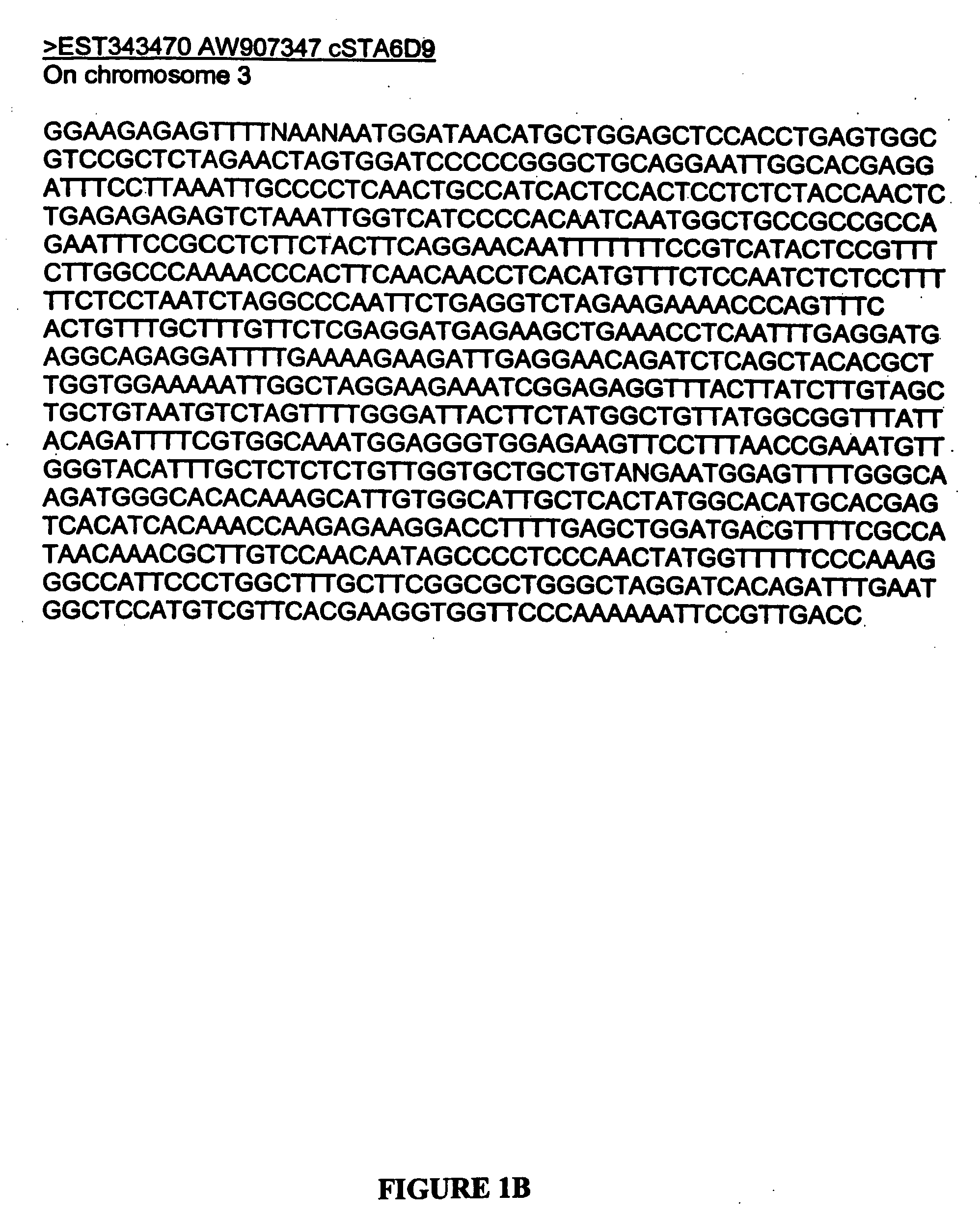Enhancement of Beta-Carotene Content in Plants
a technology of beta-carotene and plant, applied in the field of nucleic acid constructs configured for enhancing the content of beta-carotene in plants, can solve the problems of poor source of potassium-carotene, and achieve the effects of affecting the growth, development, and fecundity of plants, and increasing beta-caroten
- Summary
- Abstract
- Description
- Claims
- Application Information
AI Technical Summary
Benefits of technology
Problems solved by technology
Method used
Image
Examples
example 1
Construction of Plant Expression Plasmid with Beta-Carotene Hydroxylase Gene in Inverted Orientations and Cauliflower Mosaic Virus Promoter
[0074]In one construct, the cauliflower mosaic virus (CaMV 35S) promoter was chosen for fusion with a segment of the β-carotene hydroxylase gene in zeaxanthin-accumulating potato plants. Identical segments in inverted orientations of the β-carotene hydroxylase gene (SEQ ID NO: 1) from chromosome 6 of Solanum tubersosum were fused to the CaMV 35S promoter. The intervening linker segment is a DNA sequence of the β-glucuronidase gene with the following sequence:
SEQ ID NO: 46ATCTACCCGC TTCGCGTCGG CATCCGGTCA TGGCAGTGAAGGGCCAACA GTTCCTGATT AA
[0075]The plasmid chosen for this construct was p35S-Cha. The map for plasmid vector p35S-Cha is shown in FIG. 2A which describes the elements of the vector. The terminator used was soybean vspB 3′-end sequence, and the parent vector was pGPTV-KAN with the neomycin phosphotransferase II gene, transferring kanamycin...
example 2
Construction of Plant Expression Plasmid with Beta-Carotene Hydroxylase Gene in Inverted Orientations and Tuber-Specific Granule Bound Starch Synthase Promoter
[0078]In one construct, the tuber-specific granule bound starch synthase (GBSS) promoter was chosen for fusion with a segment of the β-carotene hydroxylase gene in zeaxanthin-accumulating potato plants. Identical segments in inverted orientations of the β-carotene hydroxylase gene (SEQ ID NO: 1) from chromosome 6 of Solanum tubersosum were fused to the GBSS promoter. The intervening linker segment is the DNA sequence of SEQ ID NO: 46.
[0079]The plasmid chosen for this construct was pG-Cha. The map for plasmid vector pG-Cha is shown in FIG. 2B which describes the elements of the vector. The terminator used was soybean vspB 3′-end sequence, and the parent vector was pGPTV-KAN with the neomycin phosphotransferase II gene, transferring kanamycin resistance for transgene selection. The binary vector plasmid, pG-Cha containing a segm...
example 3
Plasmid Transfer to Agrobacterium and Plant Transformation
[0081]The next stage was to transfer the plasmid vector to the bacterium Agrobacterium tumefaciens. This bacterium was then used to inoculate plant cells and transfer the beta-carotene hydroxylase gene in inverted orientations with an intervening DNA segment, flanked by T-DNA borders, to the plant. Potato (Solanum tuberosum 91 E22) were used as hosts for genetic transformation by Agrobacterium tumefaciens containing p35S-Cha and pG-Cha. Transformations were carried out by stem cultivation methods. For each plasmid transfer and plant transformation, approximately 100 stem internode segments between 0.5 cm and 1 cm in length were excised from six-week-old plants and incubated per 50 ml of Agrobacterium tumefaciens strain LBA4404 containing either P35S-Cha or pG-Cha for ten minutes. Internodes were then blotted dry on sterile filter paper and transferred to a callus induction medium containing Murashige and Skoog salts (Caisson ...
PUM
| Property | Measurement | Unit |
|---|---|---|
| diameter | aaaaa | aaaaa |
| length | aaaaa | aaaaa |
| length | aaaaa | aaaaa |
Abstract
Description
Claims
Application Information
 Login to View More
Login to View More - R&D
- Intellectual Property
- Life Sciences
- Materials
- Tech Scout
- Unparalleled Data Quality
- Higher Quality Content
- 60% Fewer Hallucinations
Browse by: Latest US Patents, China's latest patents, Technical Efficacy Thesaurus, Application Domain, Technology Topic, Popular Technical Reports.
© 2025 PatSnap. All rights reserved.Legal|Privacy policy|Modern Slavery Act Transparency Statement|Sitemap|About US| Contact US: help@patsnap.com



